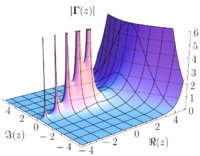| Mathematical analysis → Complex analysis |
| Complex analysis |
|---|
 |
| Complex numbers |
| Complex functions |
| Basic theory |
| Geometric function theory |
| People |
In complex analysis, the Riemann mapping theorem states that if is a non-empty simply connected open subset of the complex number plane which is not all of , then there exists a biholomorphic mapping (i.e. a bijective holomorphic mapping whose inverse is also holomorphic) from onto the open unit disk
This mapping is known as a Riemann mapping.[1]
Intuitively, the condition that be simply connected means that does not contain any “holes”. The fact that is biholomorphic implies that it is a conformal map and therefore angle-preserving. Such a map may be interpreted as preserving the shape of any sufficiently small figure, while possibly rotating and scaling (but not reflecting) it.
Henri Poincaré proved that the map is unique up to rotation and recentering: if is an element of and is an arbitrary angle, then there exists precisely one f as above such that and such that the argument of the derivative of at the point is equal to . This is an easy consequence of the Schwarz lemma.
As a corollary of the theorem, any two simply connected open subsets of the Riemann sphere which both lack at least two points of the sphere can be conformally mapped into each other.
- ^ The existence of f is equivalent to the existence of a Green’s function.






